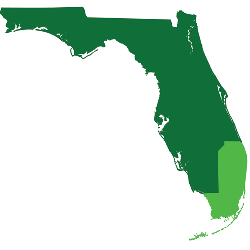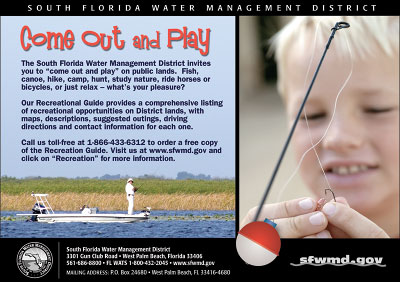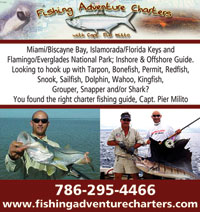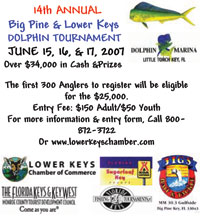
Search:
 Southeast Florida
Southeast Florida
Palm Beach County
Lake Osborne and its associated canal system are home to largemouth bass, black crappie, catfish, sunshine bass, bluegill and redear sunfish. Look for largemouth bass near aquatic vegetation such as hydrilla and eelgrass. Live shiners, spinnerbaits and topwater lures are a great way to catch the species. Live minnows and jigs will catch black crappie. Sunshine bass like to congregate in deep holes, but they can be lured out with live shiners, even at night. Live worms and chicken liver attract channel catfish swimming along the lake’s bottom.
Lake Osborne’s sister lake, Lake Ida, is loaded with largemouth, sunshine bass and even a few butterfly peacock bass. Live shiners and minnow imitations produce the best results for these fish, which are caught only during the day. Located in a convenient and urban area in Palm Beach County, fishing enthusiasts often are surprised at the high yields of fish. Bream (bluegill and redear sunfish) and exotic Mayan cichlid are also plentiful. Worms, crickets jigs and beetle spins are baits of choice for these panfish.

Palm Beach, Broward & Miami-Dade Counties
Anglers highly regard two Everglades Water Conservation Areas. The majority of fishing in Water Conservation Area 2, which encompasses 210 square miles of Everglades wetlands, takes place in the L-35B and L-38E canals. The 915-square mile Water Conservation Area 3 consists of Everglades habitat and canals. Anglers can hook largemouth bass, bluegill, redear sunfish, warmouth, Mayan cichlid, oscar, catfish and pickerel in both areas. Use soft plastic worms, jerkbaits, topwater lures and minnow imitations for bass. Water levels peak in October, which disperses fish into marsh areas, so the best time to fish in the canals is during spring and early summer. The catch rates for largemouth bass, among the highest in the state, lure many anglers to these areas. Bluegill and redear sunfish also can be caught using wigglers, beetle spins and crickets, as can Mayan cichlid and oscar.
Various species can be found in the Miami-Dade, Broward and West Palm Beach canals. Snook, tarpon and largemouth bass are caught regularly. Look for the exotic butterfly peacock bass, which resembles a brightly colored largemouth bass.
Alligator Alley and Miami canals are great places to find sunfish including largemouth bass, which can be fooled using worms and crickets. Bass will also readily take shiners. Use jigs or crickets near the shore to catch plenty of Mayan cichlid.
Shiners and plastic worms can catch largemouth bass in Palm Beach County canals, while Redear sunfish and bluegill can be had using crickets. Snook and tarpon also are found in Palm Beach’s canals.
Broward County’s canals offer the vibrant butterfly peacock bass and largemouth bass, caught using live shiners and minnow-imitating lures. Try red worms, crickets and beetle spins for the area’s oscar, Mayan cichlid, bluegill and redear sunfish. Shiners and lures resembling baitfish can fool snook and tarpon.
 |
 |
Palm Beach and Glades Counties
Lake Okeechobee is 730 square miles of some of Florida’s best-known fishing. Look for bluegill, redear sunfish, catfish and largemouth bass. Lake Okeechobee is known as the “Crappie Capital of the World,” where an abundance of these fish can be caught during cool winter months. Minnows and jigs work well to catch these fish in deep water near submerged structure.
The best time to catch largemouth bass is during late winter and spring. Golden shiners, crankbaits and spinnerbaits work well in these areas. Catfish can be found all year long with chicken livers or live worms fished on the lake bottom.
 |
 |
Monroe County
On the tip of the Everglades National Park in Florida Bay lies Flamingo, a popular and exotic fishing destination. Flamingo, less than an hour away from Miami, was virtually inaccessible 100 years ago, but now it is known for its adventurous and scenic fishing, where alligators and crocodiles co-exist. Look for sea trout, snook, jack crevalle, snapper, redfish, goliath grouper, tripletail and cobia.
More than 225 species of game fish can be found in the tropical Florida Keys, including tarpon, marlin and bonefish. Ten percent of the world’s fishing records have been set here.
Islamorada is known as the “Sport Fishing Capital of the World,” and marinas on every corner can help to locate offshore sailfish, king mackerel, wahoo, dolphin and tuna, and backcountry species, such as redfish, snook and trout. November through January is the best time to catch sailfish in Key Largo. Fish on the bottom to find snapper, grouper, king mackerel, yellowtail and cobia. Natural reefs, shipwrecks and flats are the best habitats to find fish around Key West.
To find bigger game fish, such as Hemingway’s famous giant blue marlin, venture offshore into the Florida Straights, between Cuba and Key West. Cobia, barracuda, shark, sailfish, permit, king mackerel and tuna can be found during the cooler winter months, while the warm Key West summers are known for an abundance of tarpon, wahoo, snapper, marlin and grouper.

Pompano Beach
In the heart of the Gold Coast lies Pompano Beach, an angler’s paradise. Venture from the Hillsboro Inlet out to sea to find an abundance of fish, from dolphin and grouper to sailfish, snapper and amberjack. The Pompano Beach Fishing Rodeo has created a massive offshore fishing reef off the shores of Pompano Beach. More than 20 freighters have been sunk at a depth exceeding 100 feet, which provides a perfect habitat for many species of fish.



